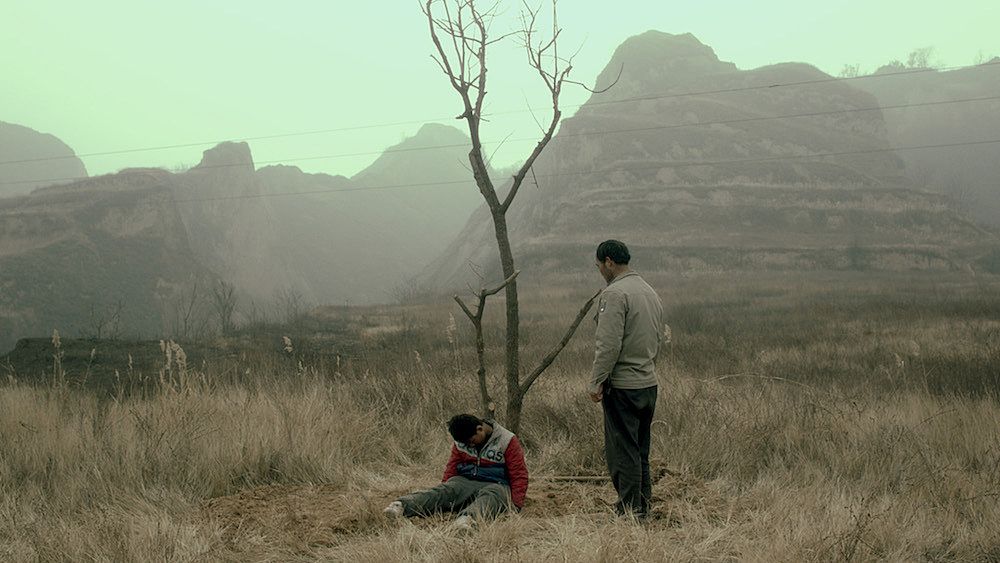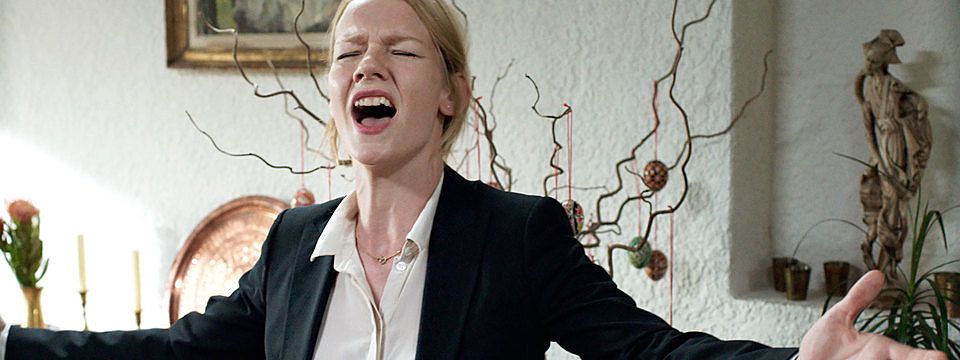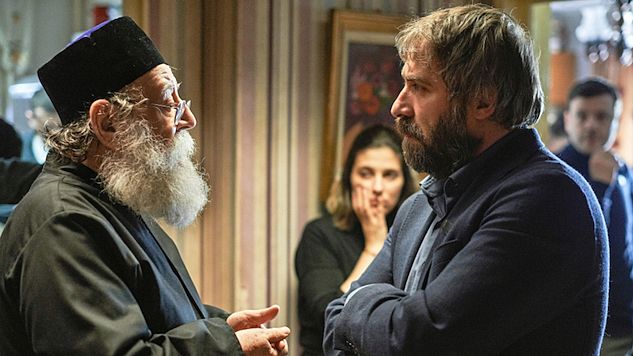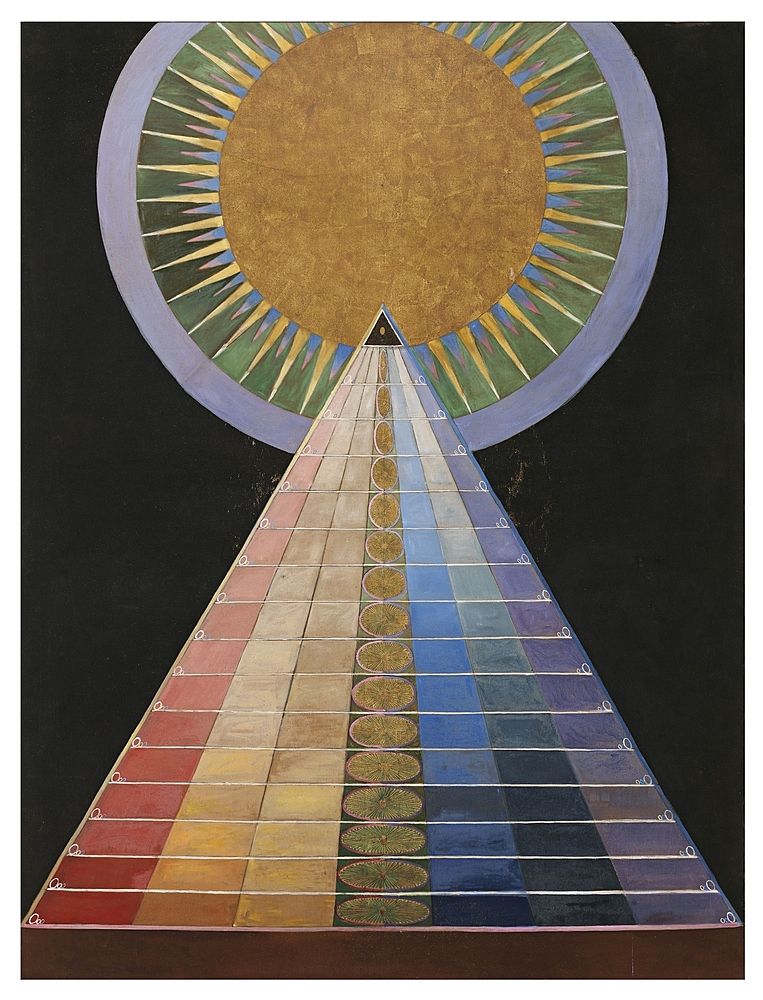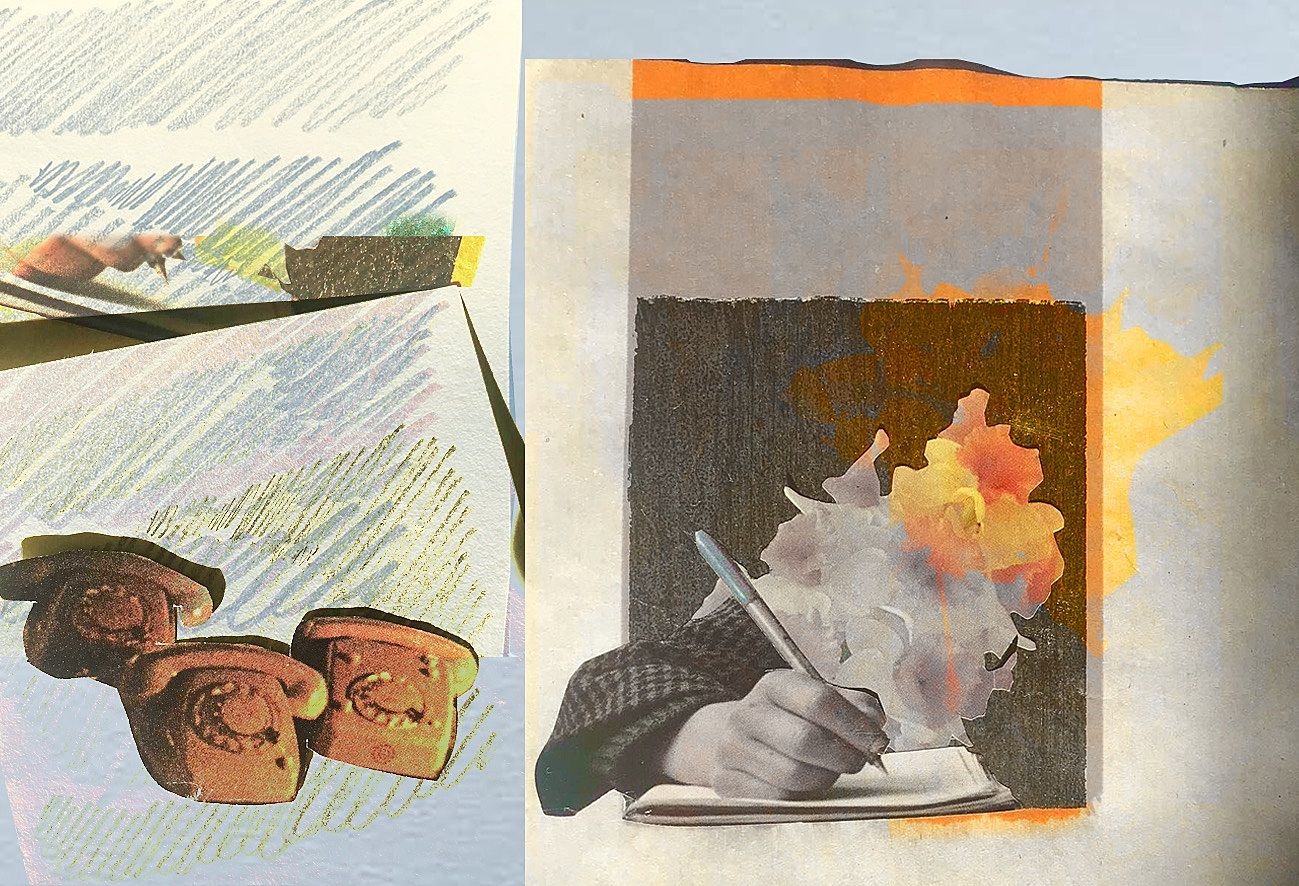Best of the Fest: Ten Top Moments at the NZIFF
Our film team hand out their inaugural NZIFF Best of the Fest awards, including Best Dog, Best (Worst) Heartbreak and Best Ending To Argue About
Our film team hand out their inaugural NZIFF Best of the Fest awards, including Best Dog, Best (Worst) Heartbreak and Best Ending To Argue About
Now that our eyes have adjusted to the daylight and we’ve regained circulation after being seated for several weeks, it’s time to take stock. Here are some of our highlights from this year's New Zealand International Film Festival. They're not our ten top films, but they're ten of our top moments: from empathetic connections with wood and Swedish mystical painters to the sounds of African soul and the creeping influence of dead dictators.
- Jacob Powell, Doug Dillaman, Brannavan Gnanalingam and Eleanor Woodhouse
Best Dog: Marvin the English Bulldog, Paterson
One of the trends that quickly became apparent in this year's Festival was the array of prominent canines incorporating the good, the bad, and the downright concerning. It seemed like every time I turned my eyes toward the screen, there was another scene with a chewing dog, upstaging its two-legged co-stars. The most diverting and cunning of these canine compadres was Marvin the English Bulldog from Jim Jarmusch’s Paterson.
Belonging to the eponymous Paterson’s wife Laura (Golshifteh Farahani), Marvin considers himself master of the house, waging a slow war of psychological attrition against Adam Driver’s unassuming, bus-driving poet. The dog spends his days putting kinks in Paterson’s familiar routines and each evening engages in a minor tug-of-war as the reluctant pair wend their the way to the local watering hole. Marvin plays cute and innocent whenever Laura is present, keeping her oblivious to the discord between her man and her man’s-best-friend, while Paterson nurses the vain hope that — as suggested at one point by a carload of passing ‘gangstas’ — someone might ‘dog-jack’ his four-legged charge. Jarmusch gets great mileage from the character of Marvin, with English Bulldog Nellie’s impressively expressive performance adding a wry comedic layer to Paterson. In a year so full of compelling canines it seems a fitting tribute that Nellie posthumously won 2016’s Palm Dog award. JP
Best Tableau: Lo and Behold: Reveries from an Interconnected World
A white nouveau-riche family dressed in funerary black are arranged unmoving, like tanned and blonde apostles, around their dining room table. Platters of muffins are displayed before them, perfect and untouched. The pain in their eyes, framed by thick borders of black eyeliner, is clear. To tell the story of the internet (well, a story, his story of the internet), Werner Herzog used a biblical rhetoric. The language was expressed abundantly, both in the spoken — chapter headings included 'The Glory of the Net'— and the visual. But never was it more effectively employed than with the first shot of the Catsouras family, whose grief at the death of their daughter in a car accident was unthinkably exacerbated when strangers emailed them images of her mangled body. The artificial, constructed nature of the scene pushes their trauma to the point of absurdity, which runs the danger of belittling the family. But absurdity and anguish are natural bedfellows. This is something that Herzog understands as naturally as Kurt Vonnegut, and he does the Catsouras’ pain a great service in this single, breathtaking shot. EW
Best Needle Drop: Miriam Makeba, 'Pata Pata', Les Demons
Philippe Lesage’s icy and paranoid 80s-era coming-of-age film Les Demons begins with bodies moving to Bach, one of many scenes set to classical music. As young Felix navigates his way through an untrustworthy world, structures that are designed to symbolise security — be they musical, organisational (the school) or familial — prove equally untrustworthy. Is it for this reason that 'Pata Pata' completely steals the movie in a rare, unambiguous moment of bliss? Or is Miriam Makeba’s hit (albeit one totally new to me) such a deliciously joyous slice of anthemic African soul that any movie would be positively ruptured in its wake? Either way, Lesage’s judgment in its placement is impeccable. It's usage in a later scene, meanwhile, provides a more complicated emotional response without undercutting the memory of joy. And so we grow up with the movie, watching innocence recede. DD
Best Tree Rolling: Life After Life
Life After Life is a slow and visually washed-out film about a dead woman who takes over her son's body so that she can convince her husband to move a tree from outside their home to a different spot. That probably doesn't sound like the most promising film of all time. The husband's quest to fulfil his wife's request (so that her spirit can find some peace) becomes so engrossing though, that the audience becomes more and more anxious when he's unable to find help. It culminates in a scene where he tries to load the tree onto his ute by rolling it over a plank. The audience I saw it with audibly groaned on behalf of the husband when a small moment occurs in that scene, suggesting that such a strange story ended up moving us all immeasurably. BG
Best Father-Daughter Musical Performance: Toni Erdmann
Judicious application of live song or dance, injected into a film, can produce a spark like few other things. A perfect recent example is Denis Lavant’s unexpected and invigorating ‘accordion interlude’ in Leos Carax’s Holy Motors (2012); such a joyous moment of pure cinema. My number one musical interlude of NZIFF 2016 occurred late in Maren Ade’s Toni Erdmann. In a scene perfectly combining Ade’s incredible script with the complete commitment of the actors, Winfried-posing-as-Toni-posing-as-the-German-Ambassador-to-Romania (Peter Simonischek) forces his daughter Innes (OMG Sandra Hüller!) into singing a ‘thank you song’ for a Romanian family they have been visiting. He jumps on an available keyboard and begins playing the opening riff to George Benson/Whitney Houston’s (The) Greatest Love of All, and what ensues is the most masterfully awkward performance, song or otherwise, that I’ve witnessed in many a moon. After giving it her less-than-impressive all, Innes gets up and walks straight out of the apartment without a word, leaving her father to deal with the aftermath, proving that a musical moment need not be ‘beautiful’ to be potent. JP
Best Ending To Argue About: Kate Plays Christine
It’s rare to say that revealing the final scene of the film isn’t a spoiler, but from the first scene of Kate Plays Christine, Robert Greene’s house-of-mirrors study of the suicide of Florida newscaster Christine Chubbuck is architected to culminate with actress Kate Lyn Sheil portraying that action on screen. The war between actress and director simmers through the entire film, as does the viewer’s confusion as to the extent that what is depicted on screen is observational documentary, a scripted performance, an unscripted performance outside of Greene’s control, or something else entirely. These tensions reach full boil at the end, and with it we're confronted with our own desires: what, after all, could possibly be a 'satisfying' end in this context? Dissenters have compared the ending to Michael Haneke’s Funny Games, but while that film makes a clear statement, both Greene and Sheil are tearing open much larger questions. I loved it, but even if you hated it, there was no movie more deserving a lengthy and lively post-mortem discussion. DD
Best (worst) Heartbreak: Certain Women
Kelly Reichardt’s Certain Women largely told us that, in Montana, not much happens. Even when you fall asleep at the wheel, your truck will gently roll off the highway and into a field and just… stop. But the absence of action was also the site of the most acute heartbreak of the festival, and Certain Women taught me the painful lesson that, sometimes, the worst thing that can happen is nothing at all. This account is vague so as to not give too much away (although the concept of spoilers is one that doesn’t really apply to this film), but I will say that Kristen Stewart’s oft-derided scatty, unfocused manner is superbly employed here, and that Lily Gladstone, as the only previously-unknown star, was completely astonishing with a face that was both completely unknowable, and a vessel for every sad, bad, complicated feeling you’ve ever had. EW
Best Spectral Dictatorial Presence: Sieranevada
I wonder how Nicolae Ceausescu, the notorious Romanian dictator, would cope knowing that he has created one of contemporary cinema's best 'national cinemas', purely on the back of how much of a douche he was. Cristi Puiu's latest masterpiece, Sieranevada, is set in contemporary Romania. However, the ghosts of the former Holy Trinity — the Church, Ceausescu, and the father — haunt a contemporary family meal. It's mostly all set in an apartment, but what stands out is the movement of the actors. Characters jump in and out of the long takes, and it's as choreographed as the most intricate ballet. Yet for all of the movement, no one actually stops to eat anything. Everyone wants to eat, but it's all summed up in the film's brilliant final shot — everyone's gone, but for the religious man, the military man, and the bourgeois man; or, in other words, no different from the past. BG
Best Artistic Discovery, 20th Century Abstract Painter Division: Hilma af Klint, Personal Shopper
The breakout discovery of Olivier Assayas’s chilly yet furious ghost story Personal Shopper wasn’t Kristen Stewart — let’s face it, we all know who she is — but a mystic female abstract painter who died 70+ years ago. When the film introduced the work of Swedish artist Hilma af Klint, I didn’t know if she was real or invented, but I knew her art hit my abstract painting sweet spot, containing resonances with the work of Kandinsky and the recently-discovered-by-me power couple Robert and Sonia Delaunay. While her work has relevant thematic heft — what power lurks underneath surfaces is the binding subject of Personal Shopper — her paintings were so uniquely potent that they drew me out of the film, leaving me briefly desperate to run across the street and curl up with a book of her work at the library, if only the projectionist would considerately pause the film for an hour or so. Unspoken and unfulfilled, this wish quickly abated, but the desire to see the work of af Klint in person ain’t going anywhere. DD
Best Fight to the Death: McCabe and Mrs Miller
McCabe and Mrs Miller was the most ad-hoc and loosely assembled of classics, and yet the final sequence is so exquisite one has to wonder whether Robert Altman decided to put his entire planning efforts for the film into the last fifteen minutes. Or perhaps it resulted from the opposite: maybe no amount of planning could ever have produced the wonder that is John McCabe, evading his would-be assassins in a small Western town while a silent snowfall, slowly yet incessantly, consumes the characters and the landscape. And the NZIFF 2016 was the best time to return Altman’s anti-western, as a recent digital restoration beautifully enhances the scene’s formal, material bliss. The white dots of snow blot and envelop the grainy screen like a reverse Rorschach test, reminiscent of earlier experimental art films and live cinema, from Warhol to our own Len Lye. It’s almost a shame, really, when the ultimate confrontation occurs, and the final breath is sighed. EW



